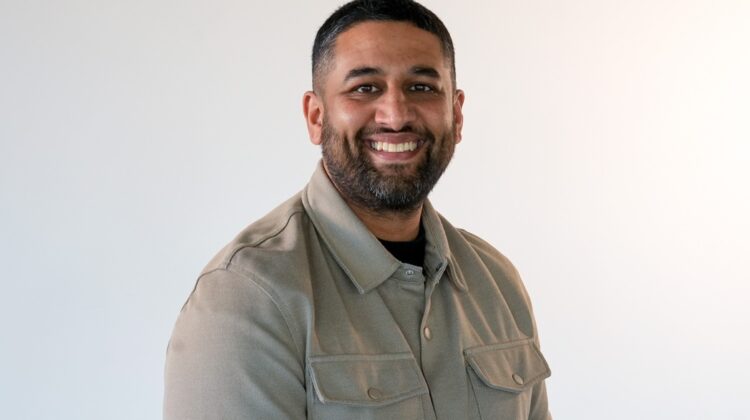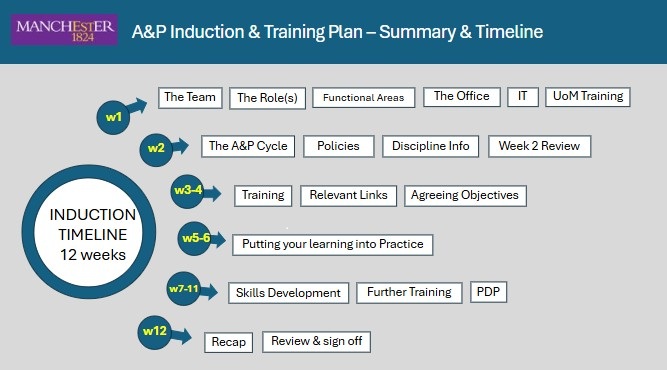Mapping the way forward: a collaborative approach to A&P training

As part of the Faculty of Science and Engineering’s (FSE) ongoing commitment to improving assessment and progression processes, a new project was launched to overhaul training and onboarding for professional services staff. We spoke to Mitesh Chauhan, who joined the Faculty in July 2024 as a Training and Development Officer, to learn more about the development of a structured 12-week induction and training programme, the creation of standard operating procedures, and the collaborative effort to build sustainable, accessible resources that support both new starters and existing team members.
How the project came about
The Assessment and Progression (A&P) review in FSE took place around two and a half years ago. The review produced a series of recommendations covering a wide range of areas including internal processes, training, and communication. For the professional services side in particular, one of the major findings was that internal processes required mapping and streamlining. In addition, the review highlighted concerns about training and induction for new team members within the assessment and progression team.

Mapping the assessment and progression processes
Midway through last year, two business analysts joined the project to comprehensively map out all processes carried out by the A&P teams across both Schools. The analysts worked closely with the A&P teams to produce high-level process maps for 31 core processes. These were a valuable resource, but for new starters, the specialised terminology made them difficult to interpret.
From process maps to standard operating procedures
To bridge this gap, the process maps were translated into clear, step-by-step Standard Operating Procedures. Hosted on the Articulate Rise platform, these laid the foundation for a more structured and accessible training programme. They help new team members understand what’s expected and how to carry out specific tasks, reducing reliance on one-to-one instruction.
Designing a 12-week induction programme
Recognising the challenges of onboarding in a fast-paced environment, a structured 12-week training plan was developed. It aims to front-load essential knowledge and skills during a new starter’s crucial first three months. The training plan is aligned with the natural A&P work cycle, so trainees engage with real processes in real time becoming productive from day one while still learning on the job.
Each two-week phase of the plan corresponds to key processes happening during that time, with training materials, responsible colleagues, required systems, and reference documents clearly identified. This helps balance independent learning with team support, freeing up experienced staff while still offering meaningful guidance.

Creating a one-stop hub
To complement the training plan, an induction and training resource hub was created on SharePoint. It compiles everything new A&P TLSE staff need to know. Each school has its own version of this hub under the TLSE SharePoint site. A broader revamp of these SharePoint pages led by Freddie Gent helped integrate the training material and documentation seamlessly.
Tailored and evolving support
The standard operating procedures vary in complexity, some involve only a few steps, while others have 20 or more. They also account for differences between Schools and have been refined in consultation with team members to remove inefficiencies and unnecessary duplication. The system also incorporates a training method matrix detailing the type of learning required for each process (e.g., shadowing, observing, practical engagement), the support staff involved, and useful links or tools.
Early results and continuous improvement
While still in the pilot phase, early feedback has been promising. Two new starters have already engaged with the full training plan and their reflections will help shape future iterations. Feedback so far is extremely positive – new staff feel better supported and more confident in their roles, and experienced colleagues are able to focus on offering higher-level guidance, as the structured material covers the core processes clearly and consistently.
Importantly, a commitment has been made to review and update the standard operating procedures annually at the end of each academic year.
Building transparency between PS and academic colleagues
The project has also strengthened understanding between professional services and academic colleagues. Some academic staff were previously unaware of the reasoning behind certain administrative steps and felt frustrated by inefficiencies. By sharing the full scope of mapped processes, the team has provided much-needed transparency and helped address historic inconsistencies.
Future potential: adapting the model for academic processes
Inspired by the success on the professional services side, there’s now growing interest in whether this process-led approach could also be applied to the academic community. Academic workflows, like marking timelines, could potentially be mapped and standardised in similar ways. Any future academic-focused work would need to carefully balance standardisation with academic freedom, but the foundation is there.
While the training element of the project has been led by the Training and Development Officer and supported by Business Change Manager Sarah Hewitt, it is the A&P team who own and sustain it. Their expertise, collaboration, and commitment have been key to embedding the new training approach and ensuring its long-term success.


